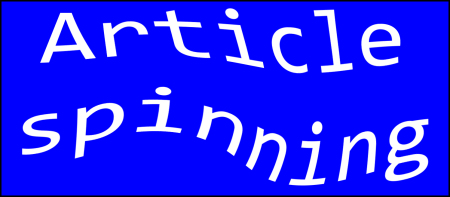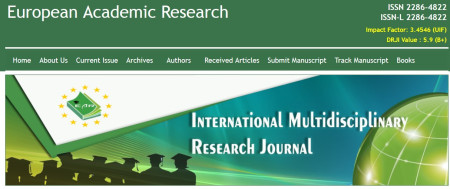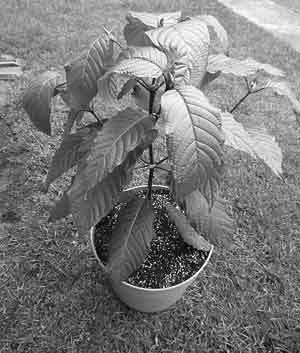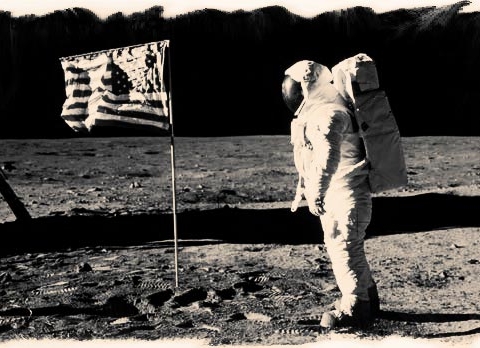
Article spinning is an increasingly-popular technique for creating plagiarized scholarly articles that plagiarism-detection software doesn’t always catch. It involves using software to copy and rephrase a published scholarly to create a new article. Terms and phrases in the source article are replaced with synonymous ones. Here’s an example.
The first of the two articles below is the original one. The second one duplicates much of the content using the “article spinning” technique, replacing words and phrases with synonymous words and phrases.
Zai, M. A. K. Y., Ansari, M. K., Quamar, J., Husain, M. A., & Iqbal, J. (2010). Stratospheric ozone in the perspectives of exploratory data analysis for Pakistan atmospheric regions. Journal of Basic and Applied Sciences, 6(1), 45-49.
Mian, K., Abbas, S. Z., Kazimi, M. R., Rasheed, F. U., Raza, A., & Iqbal, S. M. Z. (2015). Study heftiness in the astrophysical turbulence at Pakistan air space. European Academic Research, 2(12), 15697-15709.
Example
Here’s an example, showing the original article first, followed by the spun one.


Text of example (original article):
“(b) For normal data, the sample mean and variance are the unbiased estimators of location of the underlying distribution. Most physical data sets are not normally distributed even after transformation, because the assumption of an underlying normal distribution is a mathematical idealization that is never met exactly in practice because large data sets inevitably contain outliers.”
Text of example (spun article):
“(c) For Gaussian data, the example nasty and alteration are the unbiased estimators of location of the Gaussian distribution. Greatest bodily information circles are not Gaussian distributed smooth after alteration, since the supposition of Gaussian distribution is a exact romanticism that is not ever encountered precisely in repetition since big data groups unavoidably cover outliers [10].”
Note how the phrase “sample mean” was converted to “example nasty” and the phrase “mathematical idealization” was changed to “a exact romanticism,” altering the meaning in both cases. There are numerous other cases of “spun” paragraphs in the article; in fact; it appears that most of the article is unoriginal and spun from the earlier one.
I am informed but cannot confirm that the listed second (and corresponding) author of the spun article, S. Zeeshan Abbas, earned his Ph.D. at the University of Karachi largely because of the publication of the spun article in European Academic Research.

European Academic Research, where the spun article is published, is an extremely low-quality journal included on my list of questionable journals. Its co-editor-in-chief is Ecaterina Patrascu, a Romanian I reported on last year when she and her associates launched the ridiculous journal American Research Thoughts (site down, currently).
I think European Academic Research is just another of Patrascu’s money-making schemes, and the journal’s publication of this rubbish article is evidence of that. Note that European Academic Research, including the bogus article described here, is indexed in Google Scholar, the world’s largest index of junk science.
Also, the spun article’s title — “Study heftiness in the astrophysical turbulence at Pakistan air space” — is nonsense.
Another complication: The Journal of Basic and Applied Sciences, where the original article appeared, is published by a firm called Lifescience Global, a publisher also included on my list. On the journal’s “Previous issues” page, most of the links to earlier volumes and issues do not work properly and lead only to advertising, meaning most of the journal’s earlier content is lost, and many who paid to publish in the journal were ripped off. I accessed the 2010 article discussed here through an archived copy in Research Gate.
Article spinning is chiefly used as a dishonest tool for search engine optimization (SEO). There are software packages and websites that will spin text for free in some cases. Its use as described here is a re-purposing of the technique and offers researchers a way to get scholarly publications without having to do any real work.
By: Jeffrey Beall
Follow on Twitter
Source: Scholarly Open Access
Comments:
Nils says:
September 22, 2015 at 9:48 AM
The spun version makes about as much sense as a paper produced with SCIgen. Had the plagiarized article been properly peer-reviewed, it would never have been published.
Ellie fant says:
September 22, 2015 at 6:20 PM
I don’t get it, who are these authors (Mian, K., Abbas, S. Z., Kazimi, M. R., Rasheed, F. U., Raza, A., & Iqbal, S. M. Z.)? And what do they have to gain? Are these real people or fictitious names?
Nils says:
September 23, 2015 at 3:35 AM
Apparently, in certain countries, benefits such as faculty positions and/or income are directly linked to the number of publications, irrespective of these publications’ quality. It is quite possible that these are real people.
L_C says:
September 23, 2015 at 11:19 AM
You can usually find each of them listed on their corresponding University’s website where they will be listed as faculty under their respective departments. In this instance, almost all of the authors from both papers have an affiliation with the University of Karachi (either as a professor (a significant proportion of the professors at this school are former Karachi PhD students) or a former PhD student). In fact, they both even have factually who work in the same department, notably the Institute of Space & Planetary Astrophysics. So, one may question the extent to which the original authors are ignorant of the plagiarism. The copiers purposely chose this paper, a paper connected with their University, their departments, and their colleagues. Also, they all seem to frequently publish with one another. For instance, the first author of the original paper, M. Ayub Khan Yousuf Zai, has published articles with Khusro Mian, one of the authors from the second nonsense paper. They are all appear connected to the extent that, if one author were to be investigated for plagiarism, they may all be subject to scrutiny, which seems unlikely to occur. Maybe they all now benefit from protecting this practice since this would also mean protecting themselves?
Frank says:
September 22, 2015 at 10:13 AM
The quoted sections of both papers contribute nothing to science. What is this about Gaussian and normal? I work with statistics and normality is an assumption that these authors have to justify. Maybe some airspace is more “normal” than others.
Neuroskeptic (@Neuro_Skeptic) says:
September 23, 2015 at 5:56 AM
The reproduced portions of both documents donate zero to knowledge. What is this about bell-curve and everyday? I work with numbers and usualness is a basis that these novelists have to vindicate. Maybe some sky is more “as per usual” than others.
Neuroskeptic (@Neuro_Skeptic) says:
September 22, 2015 at 10:51 AM
The “spinning” method is also known as “Rogeting” – after Roget’s thesaurus.
It can be done either manually or via software. I’ve blogged about another case here.
Rogeting fools plagiarism detection software but it can be easily spotted by simply reading the text. The existence of published Rogetizations is proof of peer review failure.
L_C says:
September 22, 2015 at 12:37 PM
On a side note- I was glancing over the original article, “Stratospheric Ozone in the perspectives of Exploratory Data Analysis for Atmospheric Region,” and must ask why there are 5 authors receiving credit for this paper? It is merely a section copied from Muhammad Ayub Khan Yousuf Zai’s (the lead author’s) 2003 thesis: “A Quantitative Study of effects of Ozone Layer Depletion on Marine Organisms with reference to coastal regions of Pakistan.” I read both versions, but absolutely no novel information was added. There were only new typos, such as how the figures in the paper don’t correspond to their references in the text. For example, Fig. 5 is referred to as the Q-Q plot, instead of Fig.3. Further, Fig. 5 even has the exact same spelling error from its previous use as figure 2.1 from the thesis (shown in the Appendix). The word ‘appears’ is written as ‘apperas’ in the figure’s description. Although four more authors were added to this article, only the original typos, as well as new errors, make an appearance, and that’s about it.
The Pakistan Research Repository had an ‘Internal Server Error’ when I last accessed it, so I navigated to the 2003 thesis via the Wayback machine:
https://web.archive.org/web/20080505144147/http://eprints.hec.gov.pk/1384/1/1086.html.htm
The paper is pulled from chapter 2 of the thesis and the figures can be found in the Appendix (chapter 7). If you try to open the PDF’s through the Wayback machine, they will not open. However, you can type in their actual address and they will open if you wish to see them. They can also be found here:
Chap. 2- http://prr.hec.gov.pk/Chapters/1086-2.pdf
Appendix- http://prr.hec.gov.pk/Chapters/1086-7.pdf





